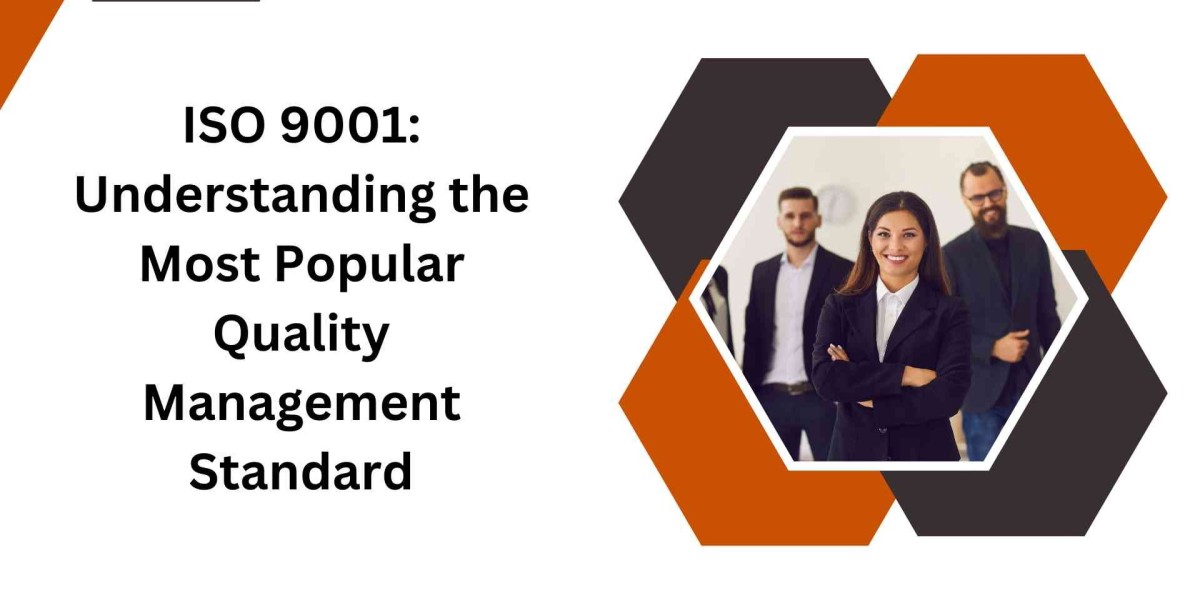In today's competitive business landscape, organizations are increasingly recognizing the importance of quality management as a means to enhance customer satisfaction and operational efficiency. Among various quality management systems, ISO 9001 Certification stands out as the most widely adopted standard globally. This article delves into the details of ISO 9001, its principles, benefits, implementation process, and its relevance in today’s business environment.
What is ISO 9001?
ISO 9001 ensures organizations meet customer needs and comply with relevant regulations for quality management. It is part of the ISO 9000 family of standards, which are developed and published by the International Organization for Standardization (ISO). The standard is designed to help organizations consistently provide products and services that meet customer and regulatory requirements, while also enhancing customer satisfaction.
The most recent version, ISO 9001:2015, was published in September 2015 and introduced several changes aimed at improving the standard's relevance in a rapidly changing business environment. The focus of ISO 9001 is on a process approach to managing an organization, emphasizing the importance of continuous improvement and risk management.
Key Principles of ISO 9001
ISO 9001 is based on seven quality management principles that form the foundation of the standard:
1. Customer Focus
Understanding and meeting customer needs is paramount. Organizations should strive to enhance customer satisfaction by ensuring that products and services meet requirements and expectations.
2. Leadership
Effective leadership is crucial for establishing a unity of purpose and direction within the organization. Leaders should create an environment that encourages employees to engage and contribute to the achievement of quality objectives.
3. Engagement of People
An organization’s success relies on the engagement of its people at all levels. Employees should be empowered and provided with the necessary resources and training to contribute effectively to the QMS.
4. Process Approach
A process approach involves understanding and managing interrelated processes to achieve desired outcomes efficiently. By focusing on processes, organizations can improve efficiency and effectiveness.
5. Improvement
Continuous improvement should be a permanent objective of the organization. Regular assessment and enhancement of processes, products, and services ensure that the organization remains competitive and responsive to changing needs.
6. Evidence-Based Decision Making
Decisions should be based on the analysis of data and information. This approach leads to more informed and effective decision-making processes.
7. Relationship Management
Organizations should foster mutually beneficial relationships with stakeholders, including suppliers, customers, and other relevant parties. Strong relationships contribute to improved performance and sustainability.
Benefits of ISO 9001 Certification
Achieving ISO 9001 certification offers numerous advantages to organizations, including:
1. Enhanced Customer Satisfaction
By adhering to the principles of ISO 9001, organizations can improve their ability to meet customer requirements consistently, leading to higher levels of customer satisfaction and loyalty.
2. Operational Efficiency
ISO 9001 encourages organizations to streamline processes, reduce waste, and enhance productivity. This focus on efficiency can result in cost savings and improved resource utilization.
3. Better Employee Engagement
ISO 9001 emphasizes the importance of employee engagement and empowerment. When employees are involved in quality initiatives, they are more likely to feel valued and motivated, which can lead to increased job satisfaction and retention.
4. Improved Risk Management
The 2015 revision of ISO 9001 introduced a stronger emphasis on risk management. By identifying and addressing potential risks, organizations can minimize disruptions and enhance their resilience.
5. Market Advantage
ISO 9001 certification can provide a competitive edge by demonstrating an organization’s commitment to quality. Many customers and clients prefer to work with certified organizations, viewing certification as a mark of credibility.
6. Global Recognition
ISO 9001 is recognized internationally, which can facilitate business relationships and open up new markets. Certification can help organizations gain access to opportunities that may require adherence to quality standards.
Implementing ISO 9001
Implementing ISO 9001 involves several key steps:
1. Understanding the Standard
The first step is to familiarize oneself with the ISO 9001 standard and its requirements. Organizations should acquire copies of the standard and consider training key personnel on its principles and processes.
2. Conducting a Gap Analysis
A gap analysis helps identify the differences between the organization’s current quality management practices and the requirements of ISO 9001. This assessment will inform the necessary changes and improvements.
3. Defining the QMS
Organizations should outline their quality management system, including policies, procedures, and objectives. This documentation should align with the principles of ISO 9001 and address identified gaps.
4. Engaging Employees
Successful implementation requires buy-in from all employees. Organizations should communicate the importance of the QMS and involve staff in the development and execution of quality initiatives.
5. Training and Awareness
Training programs should be established to ensure that employees understand their roles within the QMS and are equipped to contribute effectively to quality objectives.
6. Monitoring and Measuring Performance
Organizations should establish metrics to monitor the performance of their QMS. Regular audits and reviews can help assess compliance with ISO 9001 and identify areas for improvement.
7. Continuous Improvement
Once implemented, the QMS should be continuously evaluated and improved based on feedback, performance data, and changing circumstances. This commitment to improvement ensures that the organization remains adaptable and responsive.
The Future of ISO 9001
As industries evolve and customer expectations change, ISO 9001 will continue to adapt. Future revisions may further integrate emerging trends such as digital transformation, sustainability, and innovation. Organizations will need to stay ahead of these changes to remain competitive.
Note: You can also Apply for ISO 14001 Certification
Conclusion
ISO 9001 is the cornerstone of quality management standards worldwide. Its principles promote a culture of continuous improvement, customer focus, and effective leadership, all of which are essential for organizational success. By understanding the mechanics of ISO 9001 and implementing its guidelines, organizations can enhance their operational efficiency, improve customer satisfaction, and gain a competitive advantage in an ever-evolving marketplace. As the business landscape continues to change, ISO 9001 will remain a vital framework for organizations committed to quality and excellence.







